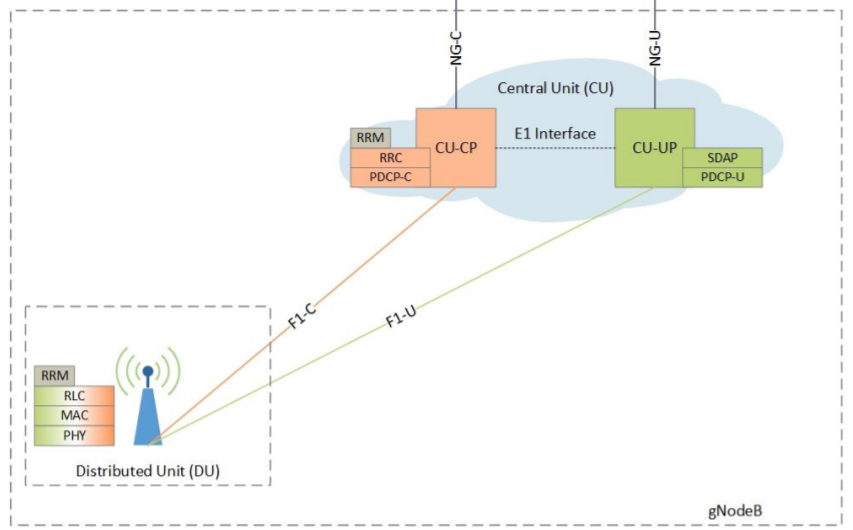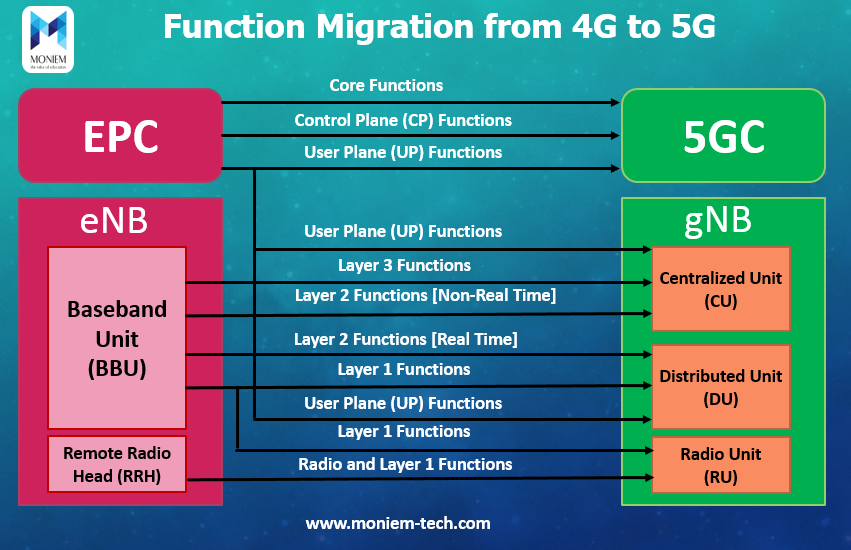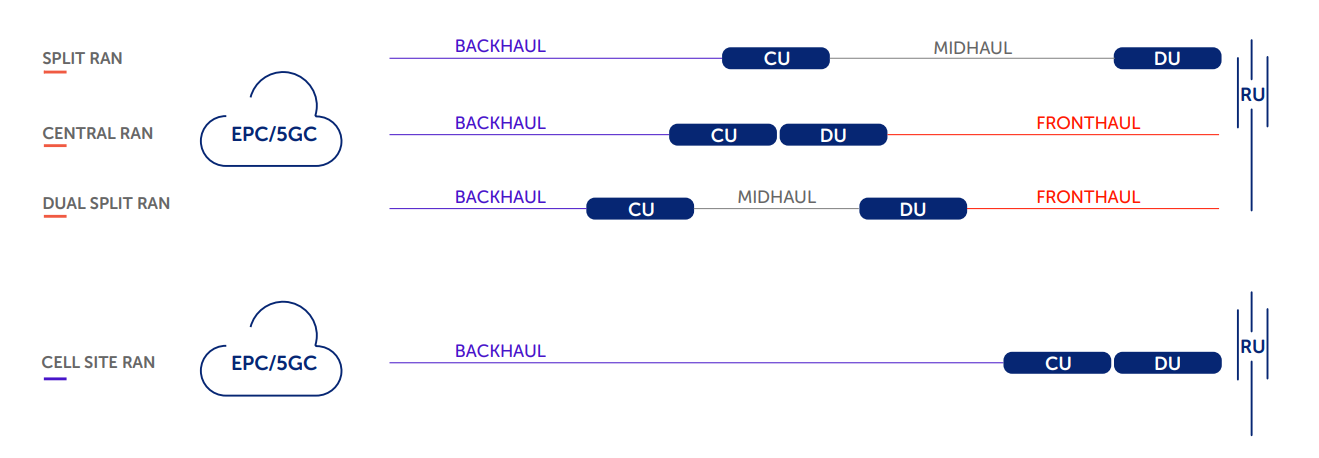Open RAN disaggregates the RAN into main 3 components as below: ? Upper Layer Split Central Unit (CU) • Logical node that includes a portion of the eNB/gNB functions as defined […]

What the Open RAN Main Components?

Functional Decomposition of the 5G RAN “Split Architecture”
In the high-level network architecture, the RAN is represented as a single functional entity whereas in reality the realization of a 5G RAN is not so straightforward. In GSM/GPRS and […]



